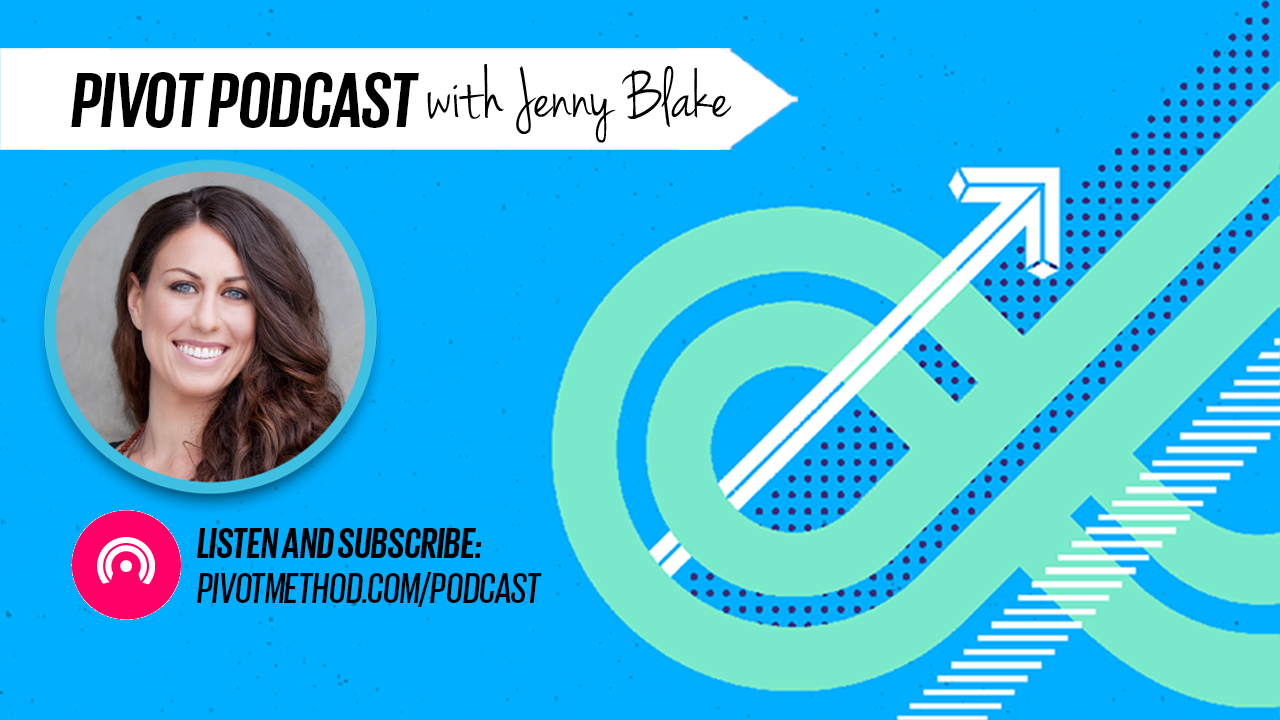What’s the difference between distraction and traction? Why don’t we do the things that we know we should do? And how can we learn from techniques that tech companies use to hook us into their products in order to redirect our attention toward what we really want to be, do, and create in the world?
Nir Eyal and I discuss these topics and more in this week’s podcast conversation based on his new book, Indistractable: How to Control Your Attention and Choose Your Life. He also outlines the four steps of the Indistractable model: master internal triggers, make time for traction, hack back external triggers, and prevent distraction with pacts.
For full show notes from this episode, visit http://pivotmethod.com/131. Enjoying the show? Pivot Podcast is listener supported. Learn more and access a monthly Q&A call with Jenny at http://pivotmethod.com/insider.
More About Nir Eyal
Nir Eyal writes, consults, and teaches about the intersection of psychology, technology, and business. Nir founded two tech companies since 2003 and has taught at the Stanford Graduate School of Business and the Hasso Plattner Institute of Design at Stanford.
He is the author of the bestselling book, Hooked: How to Build Habit-Forming Products and his latest, Indistractable: How to Control Your Attention and Choose Your Life, the topic of today’s show. In addition to blogging at NirAndFar.com, Nir’s writing has been featured in The Harvard Business Review, TechCrunch, and Psychology Today.
Topics Covered:
[03:10] Nir wrote Hooked so that people could take the same technologies that big companies use and use that technology for good.
[05:02] When interacting with his daughter, he discovered that distraction is a bad thing. He started researching the topic and every book that he found said to get rid of technology. He also discovered that this didn't work and wanted to write about the root of distraction.
[07:35] The bigger question was why do we not do the things that we know we should do? Why do we get distracted in the first place?
[09:17] Nir wanted to find other techniques besides meditation. He thinks that dealing with problems from within is only half of the solution. The other half is to do something and change the source of your discomfort.
[11:26] Blamers say that the distraction is hijacking their brain, and they are powerless to stop it.
[12:30] The four hooks in the hook model are trigger, action, reward, and investment. Successive cycles through these hooks and preferences, tastes, and habits take hold.
[16:29] Humans can dream ahead and plan for the future. The antidote for impulsive action and distraction is forethought.
[20:58] You can make time on your calendar for something that is previously a distraction and then it becomes traction.
[24:15] The four steps of the Indistractable model are master the internal triggers, make time for traction, hack back the external triggers, and prevent distraction with pacts.
[27:43] Anything you do without intent is a distraction.
[30:19] Talk to yourself in a compassionate way but with a deeper understanding of why you do what you do. Self-compassion diffuses the cycle of pain.
[40:22] Turn your values into time and keep a calendar. Plan your day. Nir plans to be fully present with his daughter. He wanted it to be easy to decide what to do, so they created a fun jar with cool things to do.
[44:07] Listening to a podcast can make dreaded activities joyful. This is called temptation bundling.
[48:00] Be Indistractable by using an autoresponder for texts and labels for email that say when to reply.
Have a question related to this episode? Ask us here, by leaving a quick voice note. We look forward to rolling all of your questions together and creating a listener Q&A show soon :)
Resources Mentioned
Nir Eyal on the web: Nir & Far, Indistractable
Twitter: @nireyal
Instagram: @neyal99
Nir’s book Bonus Bundle
Resources
Schedule Maker Tool: Schedule Maker
Distraction Guide: Distraction Guide
Article: Why People Check Their Tech at the Wrong Times (and the Simple Trick to Stop It)
Books:
Related Pivot Podcasts:
Check out other episodes of the Pivot Podcast here. Be sure to subscribe wherever you listen, and if you enjoy the show I would be very grateful for a rating and/or review! Sign-up for my weekly(ish) #PivotList newsletter to receive curated round-ups of what I’m reading, watching, listening to, and new tools I’m geeking out on.


